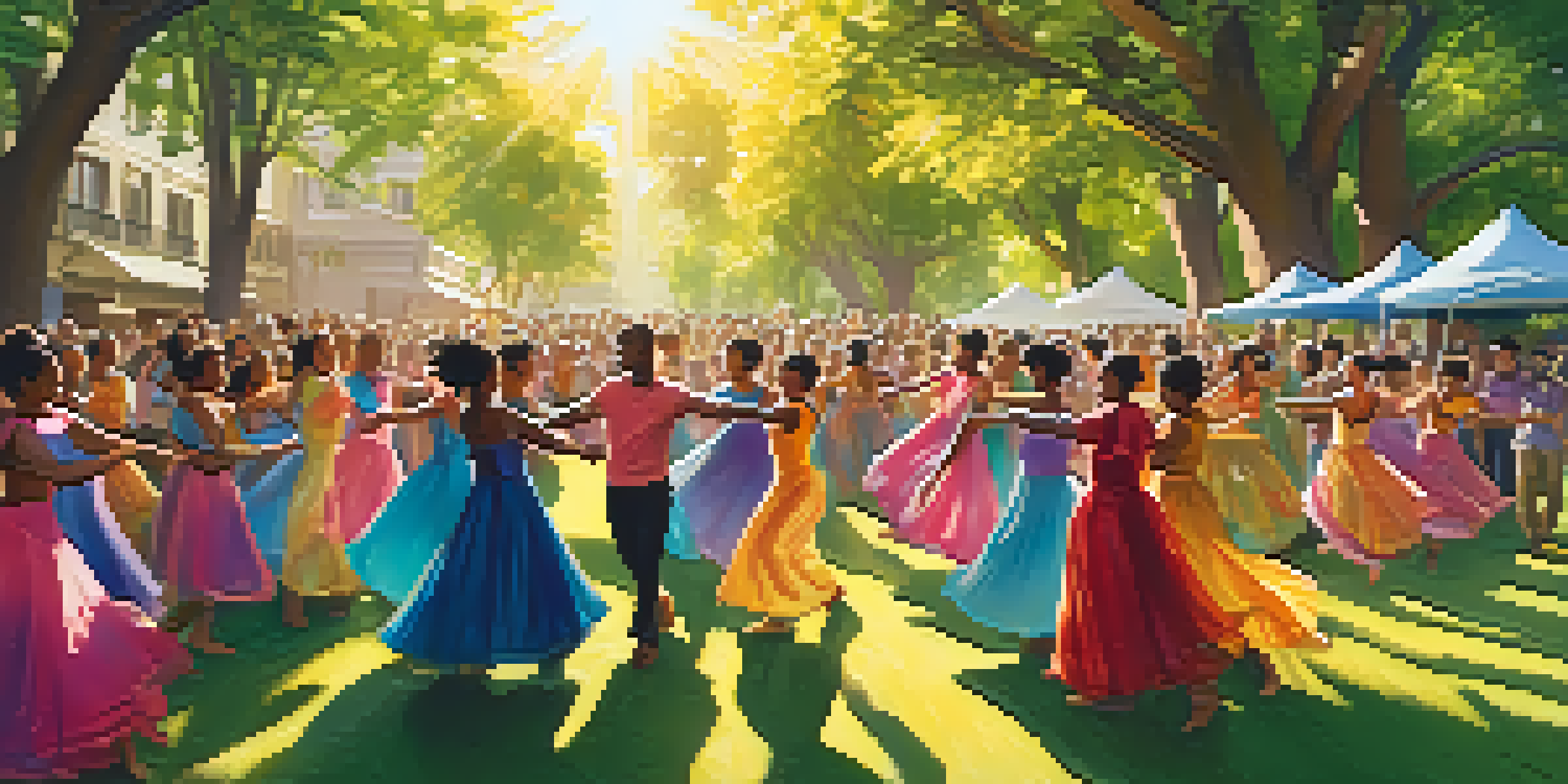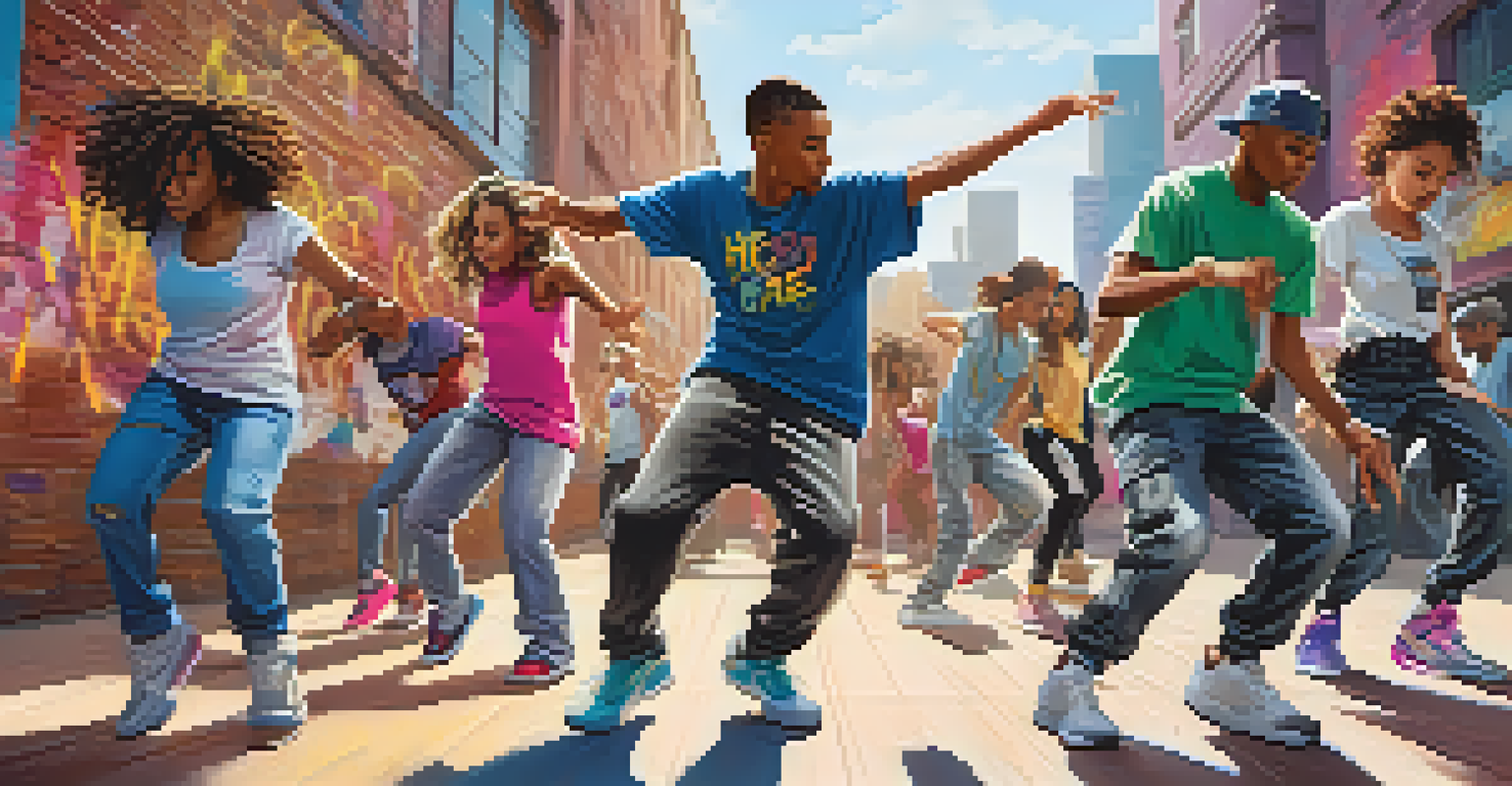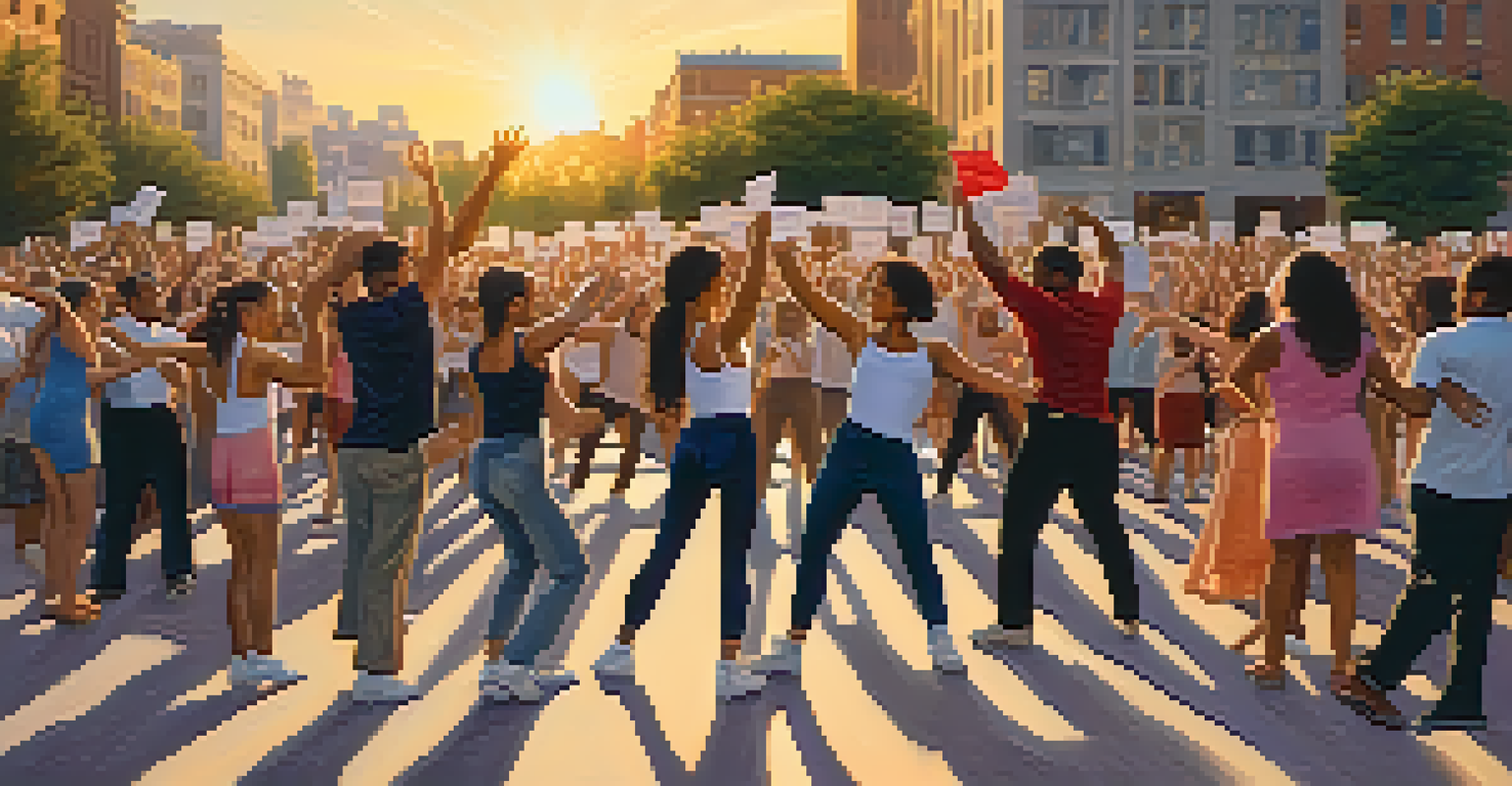Dance as a Catalyst for Social Change in Public Areas

The Role of Dance in Community Expression and Identity
Dance has always been a vibrant form of expression, allowing individuals to convey emotions and stories. In public areas, it serves as a communal activity that helps in building a shared identity. Communities often gather around local dances, celebrating cultural heritage and fostering a sense of belonging.
Dance is the hidden language of the soul.
For instance, traditional dances, like the Hula in Hawaii or Salsa in Cuba, embody the essence of their respective cultures. These dance forms not only entertain but also educate others about their roots. When performed in public, they invite curiosity and engagement from passersby, enhancing cultural appreciation.
Moreover, dance can act as a unifying force, breaking down barriers among diverse groups. In a world that often emphasizes differences, public dance performances can highlight common human experiences, making social connections more profound.
Dance as a Medium for Social Commentary
Beyond celebration, dance can serve as a powerful medium for social commentary. Choreographers and dancers often use their art to address pressing issues, from inequality to climate change. Through movement, they can convey messages that resonate deeply with audiences, sparking conversations and reflections.

Take, for example, the famous dance piece 'Revelations' by Alvin Ailey, which explores the African American experience. This performance not only showcases the beauty of dance but also provokes thought about historical and contemporary issues. Such works become platforms for dialogue in public spaces, making the art form a catalyst for change.
Dance Unites Communities
Dance serves as a communal activity that fosters shared identity and cultural appreciation among diverse groups.
Public performances allow these messages to reach wider audiences, transcending the barriers of traditional theater settings. They invite engagement and challenge spectators to think critically about the issues being portrayed, fostering an environment conducive to social change.
Creating Safe Spaces Through Dance in Public Areas
Public dance events can create safe spaces where individuals feel welcome and free to express themselves. These environments encourage participation from people of all backgrounds, promoting inclusivity and diversity. When people come together to dance, they build trust and understanding within their communities.
Movement is a language that can transcend barriers and speak to the heart.
For example, flash mobs have become a popular way to introduce dance into public spaces, surprising and delighting onlookers while also fostering community spirit. These spontaneous gatherings can break the monotony of everyday life, inviting people to join in and share in the joy of movement.
Furthermore, by transforming public areas into dance venues, communities can reclaim spaces often dominated by commercial interests. This shift not only empowers individuals but also reinforces the idea that public spaces belong to everyone, thus enhancing civic engagement.
Dance Workshops: Empowering Youth in Urban Areas
Dance workshops in urban areas play a vital role in empowering youth, providing them with a creative outlet. These workshops often focus on various styles, from hip-hop to contemporary, allowing young people to explore their talents. They also serve as a means of fostering discipline, teamwork, and self-expression.
For instance, organizations like 'Dancing Classrooms' use dance to teach social skills and confidence to young people. Through partnering and group activities, participants learn the importance of cooperation and respect for others. This kind of experience can have a lasting impact on their personal development.
Dance as Activism
Through public performances, dance becomes a powerful medium for social commentary and protest, transforming movement into activism.
Moreover, these workshops can help address issues like gang violence and crime by offering positive alternatives. Engaging youth in constructive activities like dance can deter negative behaviors and encourage them to envision a brighter future.
Dance as a Form of Protest in Public Spaces
Dance has long been used as a form of protest, allowing individuals to express dissent and demand change. In public spaces, these performances can attract attention and amplify messages, turning movement into activism. When people gather to dance for a cause, they transform public areas into stages for social change.
One poignant example is the 'Dance Your PhD' initiative, where researchers use dance to illustrate their research topics. This creative form of protest not only spreads awareness but also invites a broader audience to engage with complex subjects in an accessible manner. The combination of art and activism can be incredibly powerful.
These protests often spark conversations that extend beyond the performance itself, encouraging spectators to reflect on social issues. In this way, dance becomes more than just a performance; it becomes a call to action.
Collaborative Dance Projects: Bridging Communities
Collaborative dance projects bring together individuals from various backgrounds, fostering unity and understanding. These initiatives often involve community members in the creation and performance process, breaking down barriers and promoting dialogue. The resulting dances reflect diverse perspectives, celebrating the beauty of collaboration.
One such example is the 'Dancing for Peace' project, which unites dancers from conflicting regions to create performances together. This initiative not only showcases the power of dance but also highlights the potential for reconciliation and healing. Through shared experiences, participants can form bonds that transcend cultural differences.
Empowering Youth Through Dance
Dance workshops in urban areas provide youth with creative outlets, teaching important social skills while deterring negative behaviors.
As these collaborative projects unfold in public spaces, they invite onlookers to witness the magic of unity in action. The audience becomes part of the experience, reinforcing the idea that dance can create connections and foster community spirit.
The Future of Dance and Its Impact on Society
As we look to the future, the role of dance in fostering social change will likely continue to evolve. With advancements in technology and social media, dance can reach even broader audiences, amplifying its impact. Virtual performances and online dance challenges can engage communities that may not have access to traditional dance settings.
Moreover, the growing recognition of dance as a legitimate form of activism will encourage more artists to use their craft for social good. As more people understand the power of movement to inspire change, we can expect to see an increase in initiatives that merge dance with social causes.

Ultimately, dance will remain a vital tool for expression and change, uniting people in their shared humanity. By embracing the potential of dance in public spaces, we can create a more inclusive, compassionate society.